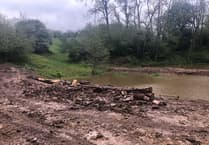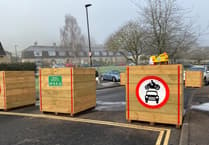The future prosperity of Midsomer Norton High Street has been a bone of contention for well over a decade. Back in 2009 Bath and North East Somerset Council published their Sustainable Community Strategy for 2009-2026. At that time Midsomer Norton was described as “the principal market town for the Somer Valley, serving Radstock and a number of rural settlements including Peasedown St John, Paulton and Farrington Gurney”.
The timeline set out in this document suggested that between 2009 and 2012 “plans will have been approved for improvements to (Midsomer Norton) town centre” and between 2012 and 2015 the “development and enhancement of Midsomer Norton town centre, and new business space on the edge of town”, will be underway. Moving on to 2015 and 2018 “the redevelopment of Midsomer Norton town centre and its new modern business space” will be continuing.
The case for investment in the redevelopment of the town centre, even a decade ago, was stark. The Midsomer Norton Town Centre Economic Regeneration Delivery Plan described the town centre as providing “a range of retail outlets, a library, and leisure facilities and caters for the majority of the local service needs in the Somer Valley area attracting frequent shoppers from its catchment population of over 46,000. Reinforcing the town as the service destination for the rural hinterland is a key priority for this plan”.
Yet despite all B&NES rhetoric, the lack of any meaningful investment in the development of the town centre led to the Midsomer Norton Community Trust, Midsomer Norton Society, the Somer Valley Chamber of Commerce and Midsomer Norton Town Council calling a joint meeting in 2017 to discuss ideas and proposals to ‘reclaim’ and rejuvenate Midsomer Norton High Street.
Following that meeting, I undertook to support The Journal with a shopper survey, designed to understand more about residents shopping habits across the Somer Valley. I’m proud to say the shopper survey proved instrumental in securing funding from the West of England Combined Authority’s “Love Our High Street” scheme in 2018, but there was so much more that the insight from this project could have achieved.
That said, the Pandemic has had its own fundamental impact on the future of High Street development, particularly the retail sector and whilst many of the trends highlighted by the shopper survey are applicable today, the impact of Covid and the Cost of Living Crisis have had a profound impact on shopping behaviour, in a way we couldn’t have appreciated in 2017.
On a positive note, the main recommendation from the shopper survey has finally been implemented by Midsomer Norton Town Council, with the creation of their High Street Working Group. Back in 2017 I suggested “B&NES, working with Midsomer Norton Town Council and the Somer Valley Chamber of Commerce” should work together to develop a strategic retail offering for the town. On June 5th, this year, Cllr Shaun Hughes proposed “to set up a High Street Working Group to review our High Street economy and recommend short, medium and long term strategies to stop and reverse the decline, create economic growth and improve footfall. Working with both B&NES and WECA to find financial and strategic support. Also creating a group for traders, business and premises owners within the High Street to provide key knowledge and feedback to the process”.
It is important to remember that Midsomer Norton is not alone amongst Market Towns in fearing for the future of it’s High Street and a great deal of research has been undertaken, post-pandemic, to understand the challenges High Streets face.
Over the next two weeks, I’ll explore what this research can tell us about the economic difficulties faced by our High Streets, not just in the South West but across the country and what strategies can be used to address this decline.
Ian Nockolds




